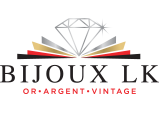Price of gold
Who? HOW?
Who determines the market price of gold?
Supply and demand. In this sense, the scarcer gold is on the market, the more buyers are willing to pay to have it. Inversely, when supply increases, price goes down because buyers have more to choose from. Considering the scant reserves remaining globally and the complexity of their extraction, gold is a safe haven. So, in recent decades, given that supply is low, the value of gold has increased considerably and buyers are prepared to shell out large sums to obtain gold. Recovery is an excellent way to have access to gold, contrary to extraction, which is limited and requires enormous efforts and resources.
Various factors contribute to fluctuation in its price: changes in stock remaining in global bank reserves and the state of mining reserves themselves, demand from various countries for use in electronics, electricity, and goldsmithing, production volumes and cost, speculations on the market based on monetary uncertainties, etc.
How is the price of gold registered?
Gold is publicly traded in physical form (on the London Stock Exchange) and in the form of futures (on the New York Stock Exchange). Gold is spot traded on the precious metal markets, primarily in New York, London, Zurich and Hong Kong. It is listed in troy ounces and U.S. dollars. Its price varies according to supply and demand.
What is a karat?
A karat is a measurement associated with the purity of precious metals such as gold. It is determined on a scale of 1 to 24, 24-karat gold is therefore nearly raw gold. Gold found on the market generally varies between 10, 14, 18, 22 and 24 karats. Karat determines the percentage of pure gold in the total mass of an alloy (gold combined with other secondary metals such as silver or copper). There is no such thing as 100% pure gold. Its highest degree of purity possible is known as «5-9 and represents 99.999% pure gold.
Do karats impact the price of gold?
Yes. The number of karats determines the purity of the gold in the total mass of an alloy, given that there is no such thing as 100% pure gold. So the value increases based on the concentration of gold in a piece of jewelry or gold. The heavier its concentration (the higher the number of karats), the higher its value too. The value of gold in global markets is determined for 24-karat gold.
